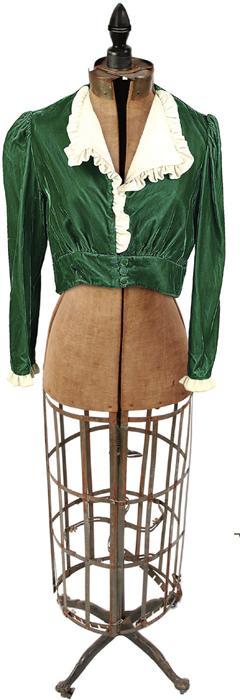 Wedding dresses, christening gowns and military uniforms are some of our most cherished family heirlooms. So why do we send them to garment purgatory (that is, the attic or basement), where they’re subjected to bugs, rodents, mold and dirt? Preserve your antique attire for future generations by following these five easy steps for keeping clothing in good shape.
Wedding dresses, christening gowns and military uniforms are some of our most cherished family heirlooms. So why do we send them to garment purgatory (that is, the attic or basement), where they’re subjected to bugs, rodents, mold and dirt? Preserve your antique attire for future generations by following these five easy steps for keeping clothing in good shape.1. Select a safe storage space.
Chances are you store your treasured textiles in a basement, garage or attic — but those are the worst places to keep them. In such environments, relative humidity is off the charts, leaving your clothes either moldy and mildewy (if the air is moist) or brittle and crumbly (if it’s too dry). Or the humidity fluctuates, causing material to shrink and swell, and the fibers to separate. Temperatures are hard to control in attics and garages, and textile fibers break down in a hot environment. Light — especially sunlight and fluorescent light — is another danger to your heirlooms: It’s a major culprit in faded color and weakened fibers.
So where can you safely store your garments? You want to find a well-ventilated area with little light and minimal temperature and humidity fluctuations. A dark interior closet or a drawer in the living area of your home is the best place.
2. Box it or hang it up.
To hang a garment, place it on a plastic (not wood, which can cause stains) hanger that’s padded with unbleached cotton cloth. Make sure the hanger is padded enough to fill out the shoulders of the garment and maintain its shape. Then make a cotton cover that will encase the material and protect it from dust and light. Avoid plastic garment bags, which hinder ventilation and increase the risk of damage from mold and insects.
If the garment is heavy or has delicate or fragile shoulders, hanging might distort its shape. Instead, place it in an acid-free storage box. Avoid creases by padding folds with acid-free tissue paper. Pad shoulders and sleeves, too, then wrap the garment in tissue paper or clean white sheets.
To encourage air circulation, don’t seal the box. Plastic or metal parts, such as buttons, buckles, pins and headpieces, don’t age well and may stain fabric, so store them separately.
3. Relish your relics.
After taking the proper precautions, you still can display your antique attire or wear it on special occasions, such as weddings. Just be careful not to damage it. If you’re going to lend a garment to, say, a bride-to-be, make sure she’s the same size or smaller than whoever originally wore it, so the fabric doesn’t tear or stretch. Also avoid exposing the heirloom to antiperspirants or makeup, which can cause stains.
If you decide to display the apparel, do so in a dimly lit room for limited periods. Keep in mind that certain types of wood, metal, plastic and cardboard emit chemicals that can damage your heirloom. Contact an art-supply or archival-supply store for safe, acid-tree frames, dress forms and cases.
4. Clean up your act.
Be sure to keep your heirloom storage area clean and tidy. Every six months, inspect it for bugs, mold and dirt — but avoid using mothballs, pesticides and harsh cleaning products that can damage vintage clothing.
Each year, take the garment out of storage and examine it for darkened stains. Wear clean white gloves when handling it because perspiration and hand creams may leave permanent marks. You can clean a garment that doesn’t have beads or loose threads by vacuuming it with a circular brush attachment wrapped in clean cotton cheesecloth. Use the lowest suction setting and a gentle blotting motion. Don’t dry-clean, bleach or wash an antique garment.
5. Leave it to the pros.
If an heirloom garment has noticeable stains, don’t try to remove them on your own. You can find a list of professional textile conservators on The American Institute for Conservation of Historic & Artistic Works’ (AIC) Web site <aic.stanford.edu>. A conservator also can help you find the right materials for a frame or display case, so you can safeguard your precious family garments for all your heirs apparent.
Clothes Call
Take steps to ensure today’s special outfits last long enough to become heirlooms. You can preserve a new garment, such as a wedding or baptismal dress, by washing it right after it’s worn. Don’t use starch or finishing chemicals. Store it in an acid-free box with unbuffered tissue paper, and avoid creases.




